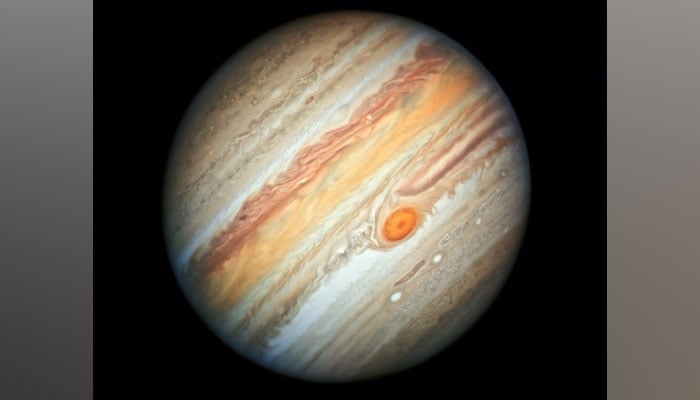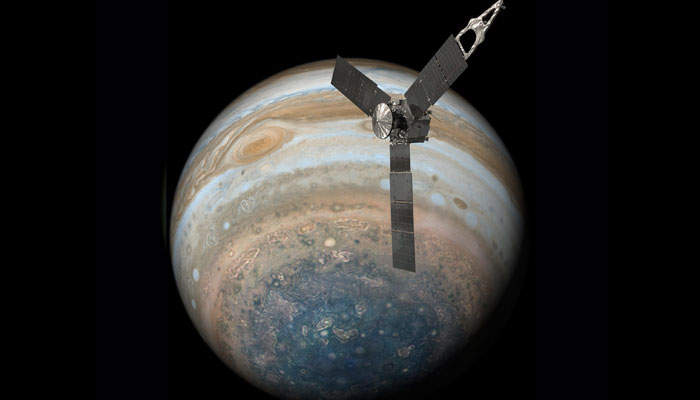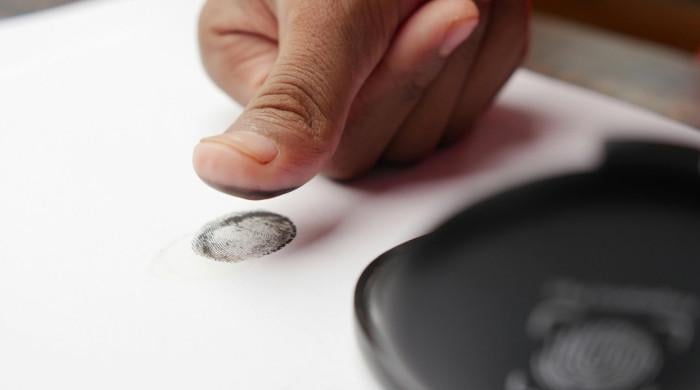Nasa's Juno spacecraft makes closest flyby of Jupiter's moon lo
The spacecraft Juno conducted more than 50 flybys of the gas giant Jupiter and flew more than 510 million miles
May 17, 2023

Nasa's Juno spacecraft, currently orbiting Jupiter, is in the process of taking a closer look at the gas giant's volcanic moon Io, making its nearest flyby of the Jovian satellite to date at an altitude of nearly 22,060 miles, Nasa said on Tuesday.
NASA’s Juno spacecraft arrived at Jupiter on July 4, 2016, after a 5-year, 1.7-billion-mile journey, and settled into a 53-day polar orbit stretching from just above Jupiter’s cloud tops to the outer reaches of the Jovian magnetosphere.
The spacecraft Juno conducted more than 50 flybys of the gas giant Jupiter and flew more than 510 million miles.
Juno embarked on a 5-year journey to our solar system's largest planet – the gas giant Jupiter. Its mission is to probe beneath the planet's dense clouds and answer questions about the origin and evolution of Jupiter, our solar system, and giant planets in general across the cosmos.

Tasked to look into the solar giant’s interior, Juno has also gathered information about three of four Galilean moons — fiery Io and icy Europa and Ganymede, and Callisto.
Moon Io, which is a bit larger than Earth’s natural satellite, goes under constant squeeze and stretch by the gravitational pull of Jupiter and the other Galilean moons.
Nasa's Jupiter mission will also gather new information about the planet's ring system where the moons are located.
Juno’s principal investigator Scott Bolton elucidated: "Io is the most volcanic celestial body we know of in our solar system."
"By observing it over time on multiple passes, we can watch how the volcanoes vary — how often they erupt, how bright and hot they are, whether they are linked to a group or are solo and if the shape of the lava flow changes."
In addition to its visible light imager JunoCam, the spacecraft’s JIRAM [Jovian InfraRed Auroral Mapper], SRU [Stellar Reference Unit] and MWR[ [Microwave Radiometer] will be studying the factors causing volcanoes in Io and how they interact with the solar system giant’s powerful magnetosphere and auroras.
"We are entering into another amazing part of Juno’s mission as we get closer and closer to Io with successive orbits. This 51st orbit will provide our closest look yet at this tortured moon," he noted.
"Our upcoming flybys in July and October will bring us even closer, leading up to our twin flyby encounters with Io in December of this year and February of next year when we fly within 1,500 kilometres of its surface."









